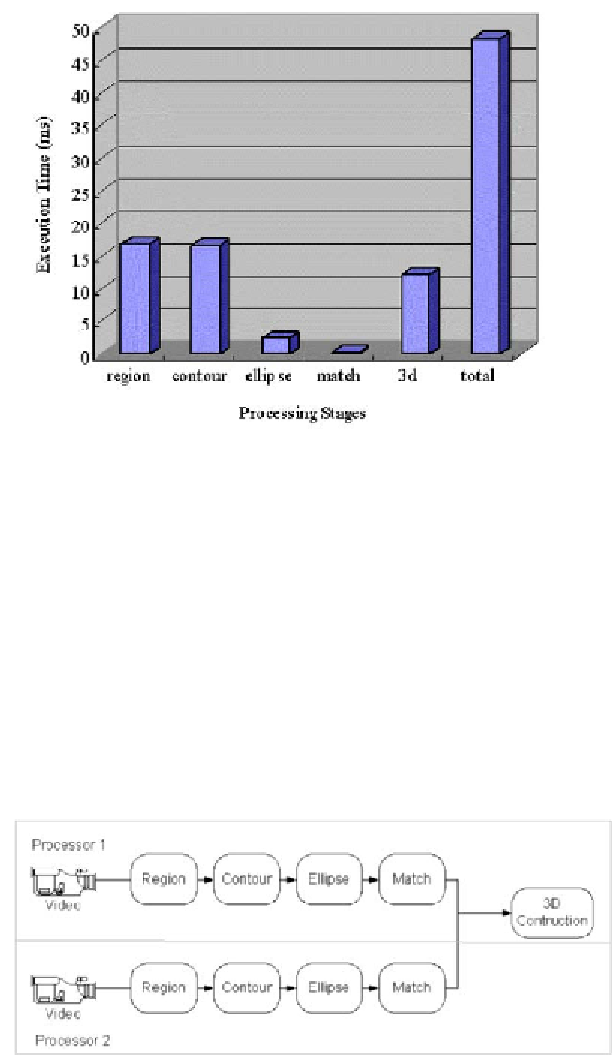Game Development Reference
In-Depth Information
Figure 24. Processing times.
Suppose we need a two-processor architecture. Since, except for the 3d stage,
all the stages have two duplicated copies, we can evenly distribute them to the
two processors and then put the 3d stage into another (Figure 25). However, by
scheduling these tasks, we can find that if we put the 3d stage into a processor,
while putting all the ellipse and match stages into another processor, the workload
would be more balanced (Figure 26). While such distribution gives the best
performance result, when area is more important, we can allocate all the floating
point related algorithm stages (ellipse, match and 3d) into one processor and trim
off the floating point unit on the other processor (Figure 27).
Figure 25. Intuitive partition.

Search WWH ::

Custom Search